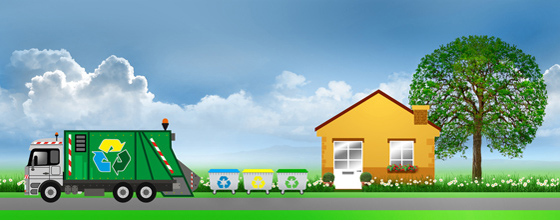
The objective of waste management research is to study the measures developed by local authorities to encourage households to adopt pro-environmental behavior. Such approach articulates two complementary approaches.
On the one hand, from an economic approach, we can analyze the choices of local authorities to encourage users of the household waste disposal service to throw less waste. In this context, we can develop a typology of action levers developed by local authorities. Four different types of user involvement strategies have been identified with American local authorities, describing combinations of specific measures to achieve the environmental objectives set by the national waste policy.
Then, from an econometric study, we can highlight the importance in the choices of local authorities of taking into account the characteristics of users, a policy being all the more effective when the users of the service are ready to implement it.
On the other hand, from an approach in human and social sciences, we observe a fairly complex relationship between the user and the waste management service, as well as sorting practices that are firmly rooted in the daily lives of individuals.
Household Waste
Household waste is waste resulting from the activity of households in their homes. They are not recovered or processed in the same facilities, and must therefore be collected separately.
Assimilated Waste
This is waste produced in small quantities by professionals (companies, craftsmen, shops, associations, etc.) and administrations, which can be collected at the same time as residual household waste (waste assimilated to household waste) due to its nature.
Waste Collection
The waste collection service is organized either door-to-door or on a voluntary basis, possibly using specialized waste disposal services like Junk Empire.
Door-to-door collection means that a container (bin, dumpster, etc.) is assigned to a user or a group of users, and that it is collected at home or in the immediate vicinity of the place of production.
Voluntary contribution means that the container is made available in a space accessible to all users.
The organizing authority for the collection of household and similar waste is responsible for defining the conditions of application of the public service available to residents and other service users. This is the main purpose of the collection policy.
Collection regulations are based on the different types of waste as described below:
- Residual household waste
- Residual household waste is thrown into garbage bags which are placed in the bins …
- Recyclable household packaging; household packaging must be discarded in bulk and without bag: either in the wheeled bins …
- Glass
- Glass jars, flasks, jars and bottles should be disposed of loose and uncapped in …
- Bulky items
- Bulky items are too heavy or too bulky waste to be collected in bins. They …
- Green waste
- Green waste is recoverable waste and should not be mixed with bulky and …
- Waste electrical and electronic equipment (WEEE); WEEE is hazardous waste that fits into a specific recovery process, …
- Waste from household, DIY or gardening activities; dangerous for people or the environment, they cannot be collected with garbage …
The waste reception center is a fitted out, guarded, fenced area where individuals (and in some cases, professionals) can bring waste which, due to their nature, quantity, size, weight or dangerousness, cannot be collected at the same time than household garbage. Users deposit their waste in specific containers for recycling, recovery or treatment.

